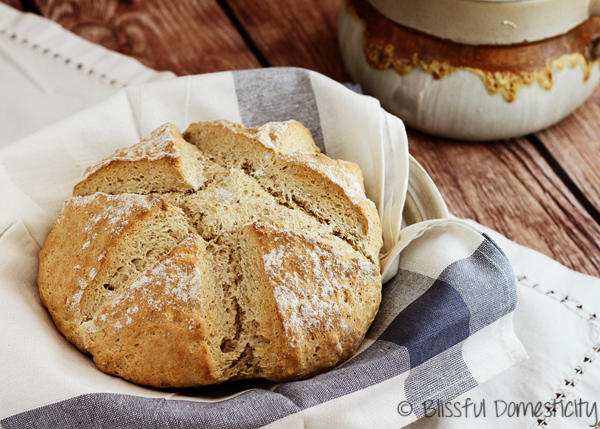 This ^^^ is what I am eating on St. Patrick’s Day! The traditional favorite is accompanied by root veggies and cabbage. My mother called that a “boiled dinner”, and she also made it with ham, as well as corned beef. I think I will serve mine with brussels sprouts and carrots, and maybe I’ll ‘cheat’ and have some potato.
This ^^^ is what I am eating on St. Patrick’s Day! The traditional favorite is accompanied by root veggies and cabbage. My mother called that a “boiled dinner”, and she also made it with ham, as well as corned beef. I think I will serve mine with brussels sprouts and carrots, and maybe I’ll ‘cheat’ and have some potato.
There are many dishes that the Irish eat which I enjoyed as a child growing up, even though we never considered them to be Irish. Most of them contained potatoes in some form or another. Potatoes and beets. Potatoes and beets and corned beef (red flannel hash). Potatoes and cabbage and/or onions (colcannon). Potatoes are probably my favorite food. Did you ever wonder what the Irish ate before they had potatoes which, after all, came from the New World?
The potato was introduced in Ireland by Sir Walter Raleigh in 1589. He brought them back from the Americas and planted them on his estate near Youghal, County Cork.
What was Irish food like for the 1500 years between Patrick and potatoes?
Nothing about the Irish climate prevents cereal crops from being grown, and Irish people have raised them since Neolithic times. The most important grain was oats, followed by barley. Wheat and rye were grown in smaller quantities, wheat being a particular luxury. It does appear that Irish people ate less bread than some of their western European counterparts, with a greater portion of their oats and barley ending up as porridge. But cereal crops were certainly an important part of the historic Irish diet.
As far as vegetables, Irish people cultivated cabbages, onions, garlic, and parsnips. The only fruits they raised as crops were apples; otherwise, they enjoyed wild berries.
Nonetheless, Irish cuisine was heavily reliant on banbidh (“white foods”), dairy products. There were a stunning variety of milk-based foods, and the Irish considered this to be the central feature of their cuisine.
Dairy, then, was used directly as milk, but also for cream, butter, cheese, buttermilk. They had a type of yogurt called bainne clabair (thickened milk) Cheese was an important thing, and it’s worth noting that the Irish valued cheese when neighboring cultures – the Anglo-Saxons and Norse – did not particularly do so.
Their meat consumption was not particularly high and mostly limited to pork. In this respect, the Irish were not unlike many other herding cultures worldwide, such as central Asian peoples or many East African cattle herders like the Maasai or Zimbabweans, who consume a lot of dairy products and meat. Fish and nuts (particularly hazelnuts) were also protein sources.
Most Irish families owned at least one cow to provide their milk requirements and also kept a few hens for eggs.
One source: A. T. Lucas, “Irish Food Before the Potato” (1960)
 The Irish eat more butter per capita than anywhere else. Although the Irish ate grains in ancient times, particularly oats, as in griddled oat cakes, apparently Irish Soda Bread didn’t show up until the 1800’s.
The Irish eat more butter per capita than anywhere else. Although the Irish ate grains in ancient times, particularly oats, as in griddled oat cakes, apparently Irish Soda Bread didn’t show up until the 1800’s.
 I won’t be making soda bread this week, but if you are interested, here’s a recipe to try; they say it’s very traditional:
I won’t be making soda bread this week, but if you are interested, here’s a recipe to try; they say it’s very traditional:
450 grams all-purpose flour (about 3 1/2 cups)
3 grams fine sea salt (about 1/2 teaspoon)
4 grams baking soda (about 3/4 teaspoon)
1 ½ cups buttermilk, more as needed
PREPARATION
Heat oven to 450 degrees. In a large bowl, sift together the flour, salt and baking soda. Make a well in the center and pour in the milk. Using your hand, mix in the flour from the sides of the bowl. The dough should be soft but not wet and sticky.
Turn the dough out onto a well-floured work surface. Wash and dry your hands. Knead the dough lightly for a few seconds, then pat the dough into a round about 1 1/2 inches thick. Place it on a buttered baking sheet and using a sharp knife, cut a deep cross in the center of the dough reaching out all the way to the sides.
Bake for 15 minutes, then reduce the oven temperature to 400 degrees, and continue to bake until the top is golden brown and the bottom of the bread sounds hollow when tapped, about 30 minutes longer. Serve warm.
Finally, here’s a cocktail/dessert to sip in honor of the day! I won’t be having this. Maybe a small glass of pinot grigio instead.
Guinness Floats with Whiskey Whipped Cream
 1/2 cup cold heavy cream
1/2 cup cold heavy cream
2 tablespoons Irish whiskey, plus more to taste
2 teaspoons sugar
2 cups vanilla, chocolate or coffee ice cream
1 12-ounce bottle Guinness or other stout, chilled
PREPARATION
Combine the heavy cream, whiskey and sugar in a bowl and whisk until soft peaks form. Taste it, then fold in more whiskey if you want!
Divide the ice cream between 2 chilled glasses, then very slowly pour the Guinness into each. (Be careful — it will bubble over if you pour too fast!) Serve with the whiskey whipped cream.
So many Irish treats, so little time! What is your favorite?



Corned beef. Might get some fresh Brussels sprouts to roast with parsnips and carrots, instead of cabbage which I always have.
LikeLiked by 1 person
Corned beef hash and Czarina’s choice, Brussels sprouts, with soda bread on the side.
Irish tea and coffee with a later treat, Irish Freckle Bread (Tea Brack made with Irish tea.)
LikeLiked by 1 person